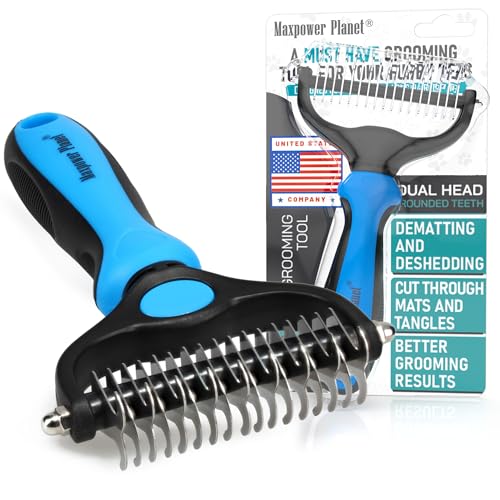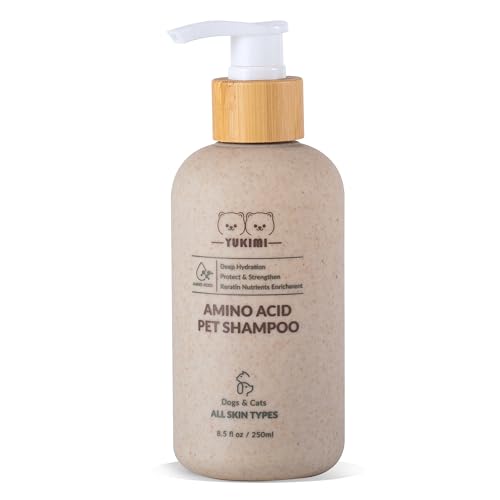Preventing Mats and Tangles in Long Fur
Long-haired cats can be prone to mats and tangles in their fur, which can cause discomfort and even health issues if left untreated. With some regular grooming and care, you can prevent mats and tangles from forming in your furry friend's coat.
One of the most important grooming tips for long-haired cats is to establish a fun routine of brushing them regularly. If you are introducing new tools or techniques to your cat's grooming sessions, be sure to add them slowly. And don't be afraid to include special treats or toys to the process to help your kitty associate fun rewards with grooming time.
A good quality grooming brush designed for long hair is essential for preventing mats and tangles. Make sure to brush your cat at least once a day, paying extra attention to areas that are prone to matting, such as behind the ears, under the arms, and around the tail.
When brushing your long-haired cat, start by using a metal comb to gently untangle any knots in their fur. Be sure to work in small sections, starting at the base of the fur and working your way towards the tip. This will help prevent pulling and discomfort for your cat. If you encounter any particularly stubborn mats, try using a detangling spray or conditioner to loosen them before continuing to brush.
$14.97
$9.99
4.21 out of 5 starsDouble Sided Pet Grooming Brush - Reduce Shedding
Achieve a Shiny, Healthy Coat for Your Feline Friend
Product information
Product Review Score
Product links
Once you have removed any mats and tangles, switch to a slicker brush or a bristle brush to thoroughly groom your cat's fur. Brush in the direction of hair growth, being careful not to tug or pull too hard. Pay special attention to areas that are prone to matting, such as behind the ears, under the arms, and around the tail. Regular brushing will not only keep your cat looking neat and tidy, but it will also help distribute natural oils and promote healthy skin and coat.
In addition to regular brushing, consider incorporating grooming wipes or a dry shampoo into your grooming routine to help keep your cat clean and fresh between baths. Remember to be patient and gentle with your long-haired cat while grooming, and always reward them with treats and praise for cooperating. With the right techniques and tools, grooming your long-haired cat can be a bonding experience that will keep them looking and feeling their best.
Bathing Tips for Keeping Fur Tangles-Free
In addition to regular brushing, keeping your cat's fur clean is key to preventing mats and tangles. Give your cat a bath every few months with a gentle cat shampoo to remove dirt and debris that can lead to matting. Make sure to thoroughly dry your cat's fur after the bath to prevent dampness, which can also cause mats to form.
$21.00
4.94 out of 5 starsYUKIMI Dermatologist Certified Hypoallergenic Formula Pet Shampoo for Cats
Revitalize your cat's coat with YUKIMI Premium Pet Shampoo for Cats and experience the benefits of Keratin Nourishment
Product information
Product Review Score
Product links
Before giving your cat a bath, make sure to brush out any knots or tangles in their fur using a wide-tooth comb or a slicker brush. This will help prevent the tangles from getting worse during the bath and make the bathing process smoother for both you and your cat.
When bathing your long-haired cat, use a mild cat shampoo specifically formulated for their coat type. Avoid using human shampoos, as they can be too harsh for your cat's delicate skin. Make sure to thoroughly rinse out all the shampoo from your cat's fur to prevent residue buildup, which can lead to tangles and matting.
After bathing, gently towel dry your cat to remove excess moisture from their fur. Avoid using a blow dryer, as the heat can damage their coat and cause further tangling. Once your cat is mostly dry, give them another gentle brushing to help fluff up their fur and keep it tangle-free between baths.
Trimming and Maintaining Healthy Cat Nails
Long-haired cats require regular grooming to keep their luxurious coats looking their best. Part of this grooming routine should include trimming and maintaining your cat's nails. Not only does this help prevent damage to furniture and accidental scratches, but it also keeps your cat's paws healthy and comfortable.
To trim your cat's nails, you'll need a pair of cat nail clippers specifically designed for this purpose. Hold your cat securely but gently, and carefully trim the tip of each nail, being careful not to cut too close to the quick, which is the pink part of the nail that contains blood vessels. If you're unsure how to trim your cat's nails, consult your veterinarian or a professional groomer for guidance.
In addition to trimming your cat's nails, it's also important to regularly check and maintain them. Inspect your cat's nails for any signs of damage or infection, such as redness, swelling, or discharge. If you notice any issues, contact your veterinarian for advice and treatment. Regular nail maintenance can help prevent painful conditions like ingrown nails and infections. By incorporating nail trimming and maintenance into your long-haired cat grooming routine, you can help keep your furry friend looking and feeling their best.




